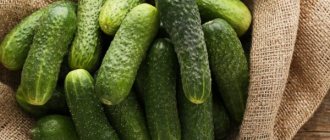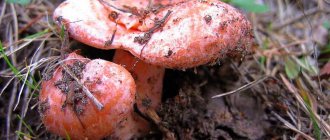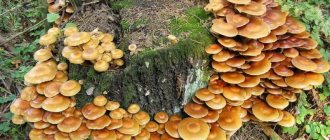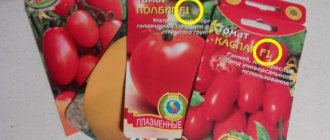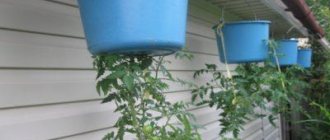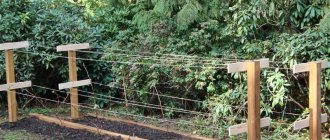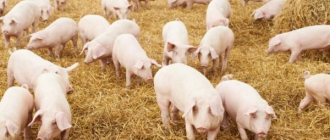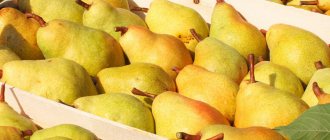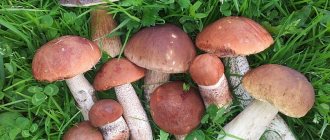Recently, standard trees have become especially popular in landscape design. They are compact, aesthetic, develop faster and provide the gardener with ample scope for realizing his fantasies. The peculiarity of standard trees is their raised branches and crown. The plant can be given the desired shape by pruning, but more experienced plant growers prefer grafting onto a standard. This method is troublesome, but it provides excellent results after just a few months.
What is a standard
The word “bole” means part of a tree trunk from the ground to the branches. Its length can vary from a few centimeters to several meters. You can make any trees and shrubs standard by forming the crown in a special way.
Related article:
How to extend the life of an old tree
The choice of plant depends on the goals that the gardener sets for himself. In recreation areas, preference is given to flowering crops. Hawthorn, almond, and fruit trees are suitable for alleys and parks. Ash, rowan, and elm look touching. Weeping forms may be located near bodies of water. In children's playgrounds, plants are planted in the form of a hut. Standard crops are suitable for stone gardens and small flower beds. Pelargonium, Chinese rose, and ficus are grown at home.
We choose the starting material - a plant that agrees to live on a trunk
Of course, the most luxurious standard plants are the beautifully flowering species: roses, hydrangeas, Japanese chaenomeles, buddleia. Hungarian lilac and Buldonezh viburnum are also grown as trunks. If desired and with a certain amount of perseverance, plants that produce active basal shoots that will have to be removed regularly can be turned into a neat tree. Among these difficult species, the most preferred are common lilac and mock orange.
A climbing rose on a trunk forms luxurious blooming lashes
Some decorative foliage plants can also look very impressive in the form of a trunk. For example, goat willow has a luxurious weeping crown, which in early spring is covered with fluffy catkins. The Japanese willow with its variegated, upward-sloping crown will also decorate the garden unusually. Rowan, maple, ash, gooseberries, currants and many other species are grown as trunks.
The alley of standard linden trees in autumn is an incredible sight
Standard forms of coniferous plants - spruce, pine, thuja, larch, cypress - are not yet very common. Therefore, if you want to be original, choose them to decorate your alpine hill or front garden.
A pine tree on a trunk can become a decoration for an alpine hill
Preparation of the trunk
To vaccinate, you must first select a standard. If there is a ready-made tree on the site, you can give preference to a strong, mature plant. It should be free of diseases and pests.
For grafting, choose 2 identical crops: this way the cuttings take root faster. If it doesn’t work out, they stop at a related option (apple tree and quince, pear and rowan).
Related article:
Unusual plant Elf silver
If there is no ready-made trunk, the tree will have to be planted on the site first. To do this, purchase a healthy seedling, prepare a planting hole for it, install the roots in it and sprinkle it with earth. The trunk is tied to a peg to prevent it from breaking. When growing standard trees, it is important to remove new shoots a year after the third leaf appears.
An important feature of crop care is mulching the tree trunk circle. For this purpose, wood chips, peat, pebbles and wood are used. The mulch layer should be at least 10-12 cm. This feature of trees is due to the fact that their trunk is bare and is often subject to freezing or damage.
Useful information: Practical aspects of summer grafting of stone fruits
Forming a trunk on shrubs
It's not just trees that are used to form trunks. Standard shrubs such as currants, gooseberries, serviceberries and other fruit-bearing garden plants are becoming increasingly common And this popularity is quite understandable. Such plants are easier to care for, harvest, etc.
Standard currants, gooseberries and other shrubs, like other trees, are obtained in two ways: removing side shoots and forming a crown, or by grafting.
You can easily transform an ordinary currant bush or other garden berry bush with the help of grafting. This is done in early spring, when active sap flow begins. Golden is well suited as a rootstock for currants .
It can also be suitable for gooseberries. Everything else happens in the same way as grafting on trees. The plant is wrapped in film at the junction. After some time, buds will begin to appear on the scion and shoots will begin to grow. At this time, the film is no longer needed. After removing the film, the resulting bush should be protected.
It must be said that neither currants nor gooseberries in the form of a standard tree can grow without support . Strong gusts of wind can easily break new unusual bushes. The support can be wooden pegs or metal rods. Unfortunately, such intervention cannot be avoided when growing standard currants. Already in the next season, the tree will give you a taste of the first fruits from the standard bush, which usually have slight differences in taste and are larger in shape.
-1
( 18 ratings, average: 4.33 out of 5)
Back
Cottage design: how to decorate a flower garden with your own hands without unnecessary hassle
MORE
Scion preparation
After 12 months, the trunk already reaches 2 m: such a plant is ready for grafting. Now you can take care of the scion - cuttings. They are prepared in the fall. To do this, young shoots are cut from trees or shrubs (thickness - 1 cm, length - 0.5 m). For the winter, they are wrapped in polyethylene, with pine branches on top, and buried in the ground. This procedure allows you to save energy for further engraftment.
Related article:
Growing magnolia Kobus from seeds: description, features
When choosing shoots, you should pay attention to ensure that they are not damaged or have signs of fungal diseases or pests. If you graft a diseased cutting, the entire tree will subsequently suffer. There should be 3-4 live buds on the shoot.
Reproduction of coniferous plants and stratification of coniferous seeds
There are three methods of plant propagation available to the average gardener.
Reproduction of coniferous trees can be by seed, cuttings and grafting. Sowing is practiced for growing species forms. Sowing seeds collected from varieties can give both the desired and completely unexpected results. For example, among the seedlings obtained from the blue form of prickly spruce, there will be both green and blue of all shades. When grown from seeds, they also obtain material that is more resistant to local conditions, since all seedlings with low viability fall out. For better seed germination, you should resort to the stratification method. Stratification of conifers, like stratification of deciduous trees, is a long-term keeping of plant seeds at a certain temperature.
When propagating conifers by seeds, cones should be collected from the beginning of autumn. Closed cones can be kept in a warm, dry place, for example, on a radiator, until fully opened, and then pour out the seeds. If possible, it is better to sow the seeds immediately, imitating the natural situation.
Propagation of conifers by seeds
Spruce. Seeds of many species do not have dormancy (common, spiny, Sitka), but cold (+1°C - +4°C) stratification for 1 to 3 months in any case improves germination.
Cypress . 3 months of stratification improves germination, although you can do without it. For Nootkan cypress, 2 months of warm (about +20°C) and 1 month of cold stratification are recommended.
Larch , pseudotuga. 0.5-2 months of stratification improves germination. Daurian and European larches germinate well without it.
Juniper . The seeds are washed for about 1 week. For unripe seeds, stratification for 4 months or sowing before winter is sufficient. Seeds from overripe cones require a preliminary warm period of three months.
Fir . Stratification of conifer seeds for one month improves germination in all species, although germination is possible without it. When propagating coniferous plants, it is better not to plant seeds in the soil, since light promotes germination.
Pine . Many species do not need stratification if the seeds are fresh. In addition to pine pines, Weymouth pines, Scotch pines, Roumeli pines, Banks pines. After dry storage, it is needed for 1-3 months. When reproducing conifers, the duration of stratification depends not only on the species, but also on reproduction and seed storage conditions.
For European pine pine, mechanical scarification and stratification for 3 months are recommended, but there are seeds with an underdeveloped embryo that require two-stage aging: a warm and a cold period of 2 months.
For Siberian and Korean pine, a good result is obtained by keeping it for 1.5 months at 2°C, 1.5 months at 25°C and again 2 months at 2°C, after which, with an increase in temperature, spontaneous germination occurs.
Yew . When propagating coniferous plants of the yew family, it is better to sow seeds before winter. According to some sources, stratification is two-stage: 3-7 months warm, 2-4 months cold.
Hemlock . 3 months of cold stratification.
Tuevik . The seeds of this type of coniferous tree are difficult to germinate even after preliminary certification.
Thuja . The instructions are very varied. There is evidence that stratification is not necessary, but it is better to keep it at a low temperature for 1-2 months. According to other sources, a long-term cold stratification of 3-7 months or even a preliminary warm period of 3-7 months is needed.
As a sowing substrate, acidic compost from turf soil with rotted remains of coniferous forest litter is optimal. Seedlings of conifers, except larch, grow slowly in the first years, so transplanting and picking can be postponed for two years.
Propagation of conifers by cuttings
Cuttings are the easiest and most common method for many varieties. But to take cuttings of coniferous plants, you need to have a greenhouse with soil made of coarse sand and peat and the possibility of constant supervision for watering, shade and ventilation. Typically, semi-lignified cuttings collected in mid-summer take root best.
In principle, cuttings of coniferous plants are also possible using lignified shoots. This should be done starting in May and throughout the season until late autumn, but then the autumn cuttings will have to be rooted indoors. The cuttings can be cut with pruning shears or the shoot with the “heel” can be torn off with a piece of wood. What will give the best result is not always clear; perhaps it depends on the type of plant.
The main thing when propagating conifers by cuttings is not to forget about the safety of the queen cell and not to take all the growth from it. Although it rarely goes to extremes, as with the Engelmann spruce variety 'Snake': when the cutting is cut, the entire branch often dies off. The size of the cutting is determined by common sense: with dwarf varieties it can be 2-3 cm long, with large and fast-growing specimens it can be up to 20 cm.
Before planting, to be safe, it is better to treat the bases of the branches with a growth substance like Kornevin. Most coniferous trees take root in the fall and are suitable for planting next year. In the first season, the yew forms only a shapeless thickening - callus, and its roots grow the next year. Pine trees practically do not take cuttings.
Grafting of coniferous trees
To propagate coniferous plants, you can resort to grafting. However, this method requires some professionalism. This propagation method is especially common in commercial nurseries. Grafting of coniferous plants is used mainly for those varieties that do not take cuttings well or grow worse on their own roots, and also for obtaining special forms. Grafting coniferous trees of creeping or prostrate varieties onto a trunk will help to obtain a weeping or umbrella-shaped shape; miniature ball varieties on a trunk are better visible and will not get lost.
By grafting several mini-varieties onto one tree, you can create something like a bonsai. Another reason is that a grafted cutting grows faster than a rooted cutting.
But this method also has disadvantages that both beginners and experienced experimenters will encounter. If the selection of a rootstock is unsuccessful, with age the scion may outgrow it and fall off, as happens when grafting Siberian pine onto Scots pine. Physiological incompatibility may occur, even several years after the operation, and the graft will wither.
There are many subtleties in this matter related to the species and variety of the material; mastering it requires familiarity with special literature.
udec.ru
Grafting technique
The grafting onto the standard is carried out using the classical method. The procedure is best carried out in early April in dry weather. You should not graft immediately after rain or during fog, since along with moisture, fungal spores, viruses or bacteria can get into the fresh cut with drops of moisture. You will need a sharp knife from your gardening tools. To process the cuts, we use garden varnish.
Procedure:
- The top of the trunk is cut off, and a cut is created in the middle with a knife - a split.
- An oblique cut is created above the upper bud of the cutting, and a wedge is formed in the lower part with two oblique movements.
- The wedge-shaped part of the cutting is inserted into the split and tied with polyethylene.
- To prevent rotting and the spread of diseases, the cut is treated with garden varnish.
Related article:
Fir: Types and description
No further action is required. The grafting is monitored for a month: new buds should appear on the cuttings, followed by shoots. When the latter reach a length of 20 cm, they are pinched.
Plant species
The height of a standard tree usually does not exceed two meters. But some specimens grow up to 5 m. Properly decorated plants look attractive at any time of the year. Even in winter, when all the leaves fall, the crown retains its spherical shape. It becomes covered with snow, turning the tree into a huge snowflake. And in the summer the first flowers and fruits appear.
In addition to beauty, such plants have other advantages. Standard trees are quite compact; they will not take up much space on the site. A round crown is easier to process and harvesting from it is much simpler.
The most common form of trunk is weeping. Usually they try to stylize rowan, elm, goat willow, and some varieties of apple trees.
Such plants were transplanted to the site from the wild or bred artificially.
If you graft a tree at the bottom of the rootstock, the branches will be creeping.
And when working with a tall trunk, you will get a penetrating crown; it comes in four types:
- reflex;
- inverse;
- pendula;
- umbrella.
With a reflex, the shoots grow vertically downward, and with inversion, in an arc. A pendula is a crown shape in which the branches hang at an angle of 60 or 30 degrees. In umbrella trees, the shoots are directed horizontally and rise slightly.
If you form a trunk on shrubs such as cotoneaster or juniper, their crown will be weeping. And thuja, acacia, larch and maple will take the shape of a ball.
Further care of the plant
Overgrown shoots need to be secured with pegs to protect them from the wind. To make the plant stronger faster, it is regularly fed with nitrogen fertilizers and watered, and treated with chemicals against pests and diseases.
If mosses or lichens appear in the cracks of the tree, they are removed using a scraper. In the fall, dead bark is removed from the trunk to prevent pests from infesting it. In spring, trees must be whitened (for plants with smooth trunks, the procedure is not necessary). From time to time, young shoots are removed, since they consume a lot of nutrients that can be used to form the crown.
Related article:
Sanitary pruning of the garden: 5 basic principles, the observance of which will give good results
Trimming branches
The easiest way to make a standard is by cutting shoots. Beginning gardeners can also cope with this technology. It is necessary to trim the side shoots, giving the tree a ball shape. But this will take many months, although the result will exceed all expectations.
It’s easy to decorate a tree with your own hands. It is enough to follow some rules:
- choose the right seedling;
- tie up a plant;
- use support;
- pin the top.
It is important to choose a suitable seedling. It should have a smooth, even trunk. Only from this can a standard tree be grown. Immediately after planting, the tree is tied to a metal peg. This will ensure proper growth. As the seedling grows, it is constantly tied to a support to keep it level.
What to do if the cutting does not take root
Before grafting a cutting onto a standard, you should carefully study the technology and make sure the quality of the material. If the grafting was done incorrectly, or the plant was not properly cared for, the scion may not take root.
In this case, you can repeat the procedure after a year. To do this, the dead cutting is removed, a new cut is made on the trunk and the prepared shoot is again deepened into it. Even if the first attempt was unsuccessful, you should not despair. Vaccination is a complex procedure that requires skills, and they are acquired only with experience.
Important Tips
It is difficult for novice gardeners to understand the stamping procedure, which means they can make serious mistakes. They will benefit from recommendations from more experienced owners:
- it is necessary to germinate the trunk;
- scion cuttings are selected in April;
- it is necessary to make the cuts correctly;
- It is advisable to use garden varnish.
After planting, the trunk is tied up and germinated immediately to the desired height. If this is a tree, then it should be one and a half meters or taller; for shrubs, 50-70 cm is enough. All this time it is attached to a support. In April, young cuttings are selected for scion. They must have buds on them. For a wedge, two cuts are made at the bottom, and for proper germination, one at the top of the shoot.
You need to insert the cutting into the stem so as not to damage both plants. You should not use sharp or metal objects; it is better to do everything with your hands. The attachment point is sealed with polyethylene and lubricated with garden varnish to avoid the penetration of pests and rotting.
If an ornamental plant was chosen for the trunk, then it is better to place it on the lawn. When the flowers appear, they will look beautiful against the green grass. But the space around the trunk is cleared of lawn and mulched. To do this, prepare a mixture of peat, sand, pebbles and sawdust. It is sprinkled on the ground and covered with paper or film.
The thickness of the embankment should reach 12 cm. This layer helps the soil warm up faster in summer and protects it from freezing in winter.
Description
Thuja on a trunk is a slender, graceful tree with a lush man-made compact crown, the unusual shape of which is achieved using a special molding pruning.
Thuja on a trunk PHOTO Plant nursery Nature Priroda
Our nursery presents the following types of thuja on a trunk:
- Thuja occidentalis is an evergreen coniferous plant, also known as Northern white cedar. A monoecious, long-lasting tree with dense, flattened, fan-shaped growing branches tightly pressed to the trunk and dark green soft, scaly needles, which acquire a brownish tint in winter.
- Thuja orientalis is a bright representative of coniferous plants with a fan-shaped arrangement of branches, forming a wide, dense crown. It has pointed, scale-like yellowish-green needles, with a beautiful golden color on young shoots. Today, Thuja orientalis does not belong to the genus Thuja and has received a new name - Platycladus orientalis.

